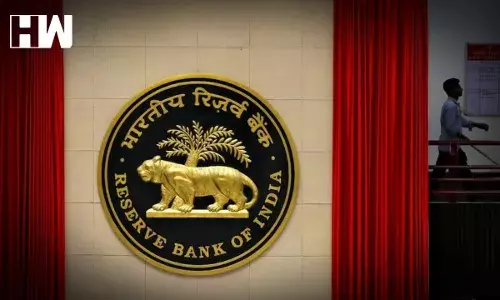New Delhi: According to the Reserve Bank of India’s (RBI) report on currency and finance for FY22, it will take roughly 15 years for the Indian economy to recover from the losses experienced during the coronavirus pandemic.
“Taking the actual growth rate of -6.6 percent for 2020-21, 8.9 percent for 2021-22 and assuming growth rate of 7.2 percent for 2022-23, and 7.5 percent beyond that, India is expected to overcome COVID-19 losses in 2034-35,” the report, released on April 29, said.
The report’s theme this year is ‘Revive and Reconstruct’ in the context of fostering a long-term post-pandemic recovery and raising medium-term trend growth. It does not reflect the views of the RBI, but rather those of the contributors, who are members of the RBI’s Department of Economic and Policy Research.
The expectation of a 7.5 percent growth rate from next year onwards is a bit optimistic. According to the latest World Economic Outlook report from the International Monetary Fund, India’s growth rate for FY24 will be 6.9%. Even the RBI’s own Monetary Policy Report, released on April 8, stated that structural models predicted 6.3 percent GDP growth in FY24.
Several independent economists expect GDP growth to reach closer to 6% next year and possibly beyond. This would mean that recovering from the pandemic’s losses would take longer.
In monetary terms, the central bank’s staff predicts output losses of Rs 19.1 lakh crore in FY21, Rs 17.1 lakh crore in FY22, and Rs 16.4 lakh crore in FY23.
In FY22, India’s real GDP is expected to be Rs 147.54 lakh crore.
“The dividends of reforms initiated to counter the pre-COVID slowdown along with additional measures and initiatives during the pandemic will help launch the economy on a sustainable high growth path. The behavioural and technological changes brought about by the pandemic may usher in a new normal which would not necessarily ape the pre-pandemic trends but would be built on a more efficient, equitable, clean, and green foundation,” the report added.
Governor Shaktikanta Das wrote in the report’s prologue that simply stabilizing the economy and returning it to its pre-first wave path was not enough. According to Das, the goal was to establish a “virtuous circle of increasing opportunity” for entrepreneurs, enterprises, and the government.
As an independent media platform, we do not take advertisements from governments and corporate houses. It is you, our readers, who have supported us on our journey to do honest and unbiased journalism. Please contribute, so that we can continue to do the same in future.

